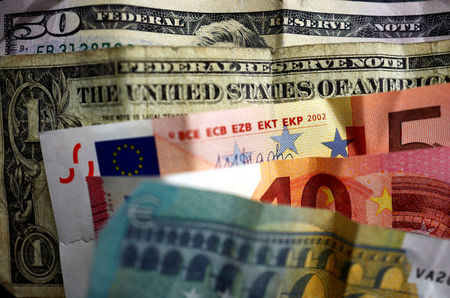
By Colleen Howe and Trixie Yap
(Reuters) -Oil prices edged up on Wednesday as developments in the Middle East took centre stage against cautious demand expectations and ahead of a government meeting on China’s fiscal policy.
Brent crude futures rose 45 cents, or 0.6%, to $77.63 a barrel by 0703 GMT. U.S. West Texas Intermediate futures rose 33 cents to $73.90 a barrel.
Prices had plunged more than 4% in the previous session on a possible Hezbollah-Israel ceasefire, but markets remain wary of a potential Israeli attack on Iran’s oil infrastructure.
“The everyday dilemma of ‘Middle Eastern headlines’ moving like a pendulum between ‘ceasefire talks’ and ‘further escalation in attacks’ has been distracting investors from reality … Oil markets are twirled in sentiments of ‘buying the rumour’ and sidelining the real fundamentals that should matter,” said Phillip Nova senior market analyst Priyanka Sachdeva in an email.
The sell-off on Tuesday followed a rally that began after Iran launched a missile barrage at Israel on Oct. 1, culminating in an 8% gain on the week on Friday, the largest in more than a year.
Hezbollah officials on Tuesday appeared to back off from a truce in Gaza as a condition for a ceasefire in Lebanon. Hezbollah’s deputy leader Naim Qassem said he backed attempts to secure a truce in a televised speech, the first time the end of the war in Gaza was not mentioned as a pre-condition.
Also supportive for prices, China’s finance ministry will detail plans on fiscal stimulus at a highly-anticipated news conference on Saturday, the government’s main information office said on Wednesday.
Markets have been awaiting further news of fiscal support by Beijing to help China’s flagging economy, which in turn can stimulate oil demand. A press conference by the state planner on Tuesday had disappointed investors after it offered no big stimulus to revive economic growth.
OANDA’s senior market analyst, Kelvin Wong, expects a sideways trading pattern for the oil market in the short term, with WTI confined within a range of $73.15 to $78.30 a barrel, pending announcements on China’s new fiscal stimulus measures and developments in the Middle East.

On the demand front, data showed U.S. crude oil stocks rose by nearly 11 million barrels last week, much more than analysts polled by Reuters had expected, according to market sources citing American Petroleum Institute figures on Tuesday. However, fuel stockpiles fell.
Weak demand continued to underpin the fundamental outlook. The U.S. EIA on Tuesday downgraded its 2024 forecast for global oil demand growth by 20,000 barrels per day (bpd), to 103.1 million bpd, because of weaker industrial production and manufacturing growth in the U.S. and China.
This post is originally published on INVESTING.



